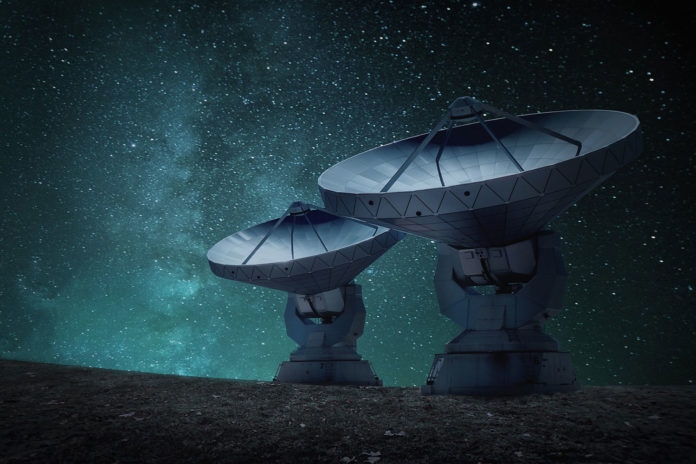A team of astronomers from the Pune-based National Centre for Radio Astrophysics (NCRA-TIFR) have recently discovered a rare class of radio stars hotter than the sun. The discovery, which was made using the upgraded Giant Metrewave Radio Telescope (uGMRT), could improve understanding of “exotic” radio stars and stellar magnetospheres.
The team has discovered eight stars belonging to a rare class of radio stars. These stars are actually ‘Main-sequence Radio Pulse’ emitters or MRPs that have powerful magnetic fields.
The MRPs emit much brighter radio signals and have significantly strong stellar winds along with strong magnetic fields. They are a close relative of the pulsars- nicknamed- atomic clocks. But, unlike pulsars, they rotate at a relatively slower rate.
Out of the total known 15 MRPs, 11 were discovered with the GMRT. Three of them were found in the past.
Barnali Das, a Ph.D. student at the NCRA-TIFR and lead author of the study, said, “Among the eight discovered MRPs, the time taken for a single rotation by these stars ranged anywhere between half a day to four days.”
“The success of the GMRT program has revolutionized our notion about this class of stars. Though the first MRP was discovered in 2000, it was only due to the high sensitivity of the uGMRT that the discovery of more such stars as possible. The survey’s success with the uGMRT suggests that the current notion of MRPs as rare objects may not be correct. Rather, they are probably more common but are difficult to detect.”
“Among the eight discovered MRPs, the time taken for a single rotation by these stars ranged anywhere between half-a-day to four days.”
Detecting MRPs is quite challenging due to their radio pulses. These radio pulses are visible only at select times of the day and year. They can be seen only in low radio frequencies. What’s more, these radio pulses contain a vast amount of information regarding the stellar magnetosphere.
After knowing about their existence, the NCRA group has been conducting observations on specific days since mid-2019 within the 400 Mhz – 850 MHz bandwidth.
These observations also collected observational data from the Karl G Jansky Very Large Array (VLA) located in the US. They found this rare class of radio stars within the Milky Way, located about 150 light-years away from the Earth.
Das said, “The pulsed radio emission from MRPs is the only visible signatures of the theoretical models which predicts tiny explosions in massive magnetic stars that occur at specific locations in the magnetosphere of the star. These explosions have been predicted to play an important role in regulating the transport of wind materials surrounding the star and are likely to affect the stellar evolution as well.”
Journal Reference:
- Barnali Das and Poonam Chandra. Ultra-wideband, Multiepoch Radio Study of the First Discovered “Main-sequence Radio Pulse Emitter” CU Vir. DOI: 10.3847/1538-4357/ac1075
